Halych
Halych (Ukrainian: Га́лич, romanized: Halyč [ˈɦɑlɪtʃ]; Romanian: Halici; Polish: Halicz; Russian: Га́лич, romanized: Galič; German: Halytsch) is a historic city on the Dniester River in western Ukraine. The city gave its name to the Principality of Halych, the historic province of Galicia (Halychyna), and the Kingdom of Galicia–Volhynia,[1][2][3] of which it was the capital until the early 14th century, when the seat of the local rulers moved to Lviv.
Halych Галич | |
|---|---|
.jpg) | |
 Flag  Coat of arms | |
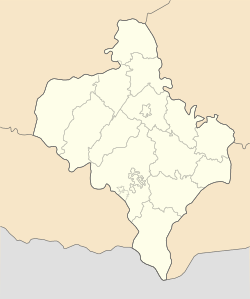 Halych  Halych | |
| Coordinates: 49°7′29″N 24°43′43″E | |
| Country | |
| Oblast | |
| Raion | Halych |
| Government | |
| • Mayor | Orest Trachyk |
| Population (2016) | |
| • Total | 6,247 |
| Website | City's Council Raion Administration |
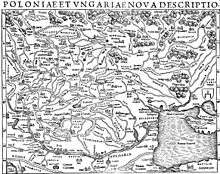
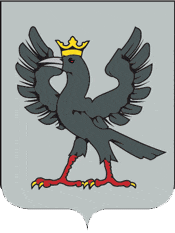
Nowadays, Halych is a small town located only on one part of the territory of the former Galician capital, although it has preserved its name. It functions as the administrative center of Halych Raion (district) of Ivano-Frankivsk Oblast (region). It lies 26 km (16 mi) north of the oblast capital, Ivano-Frankivsk. Population: 6,247 (2016 est.)[4].
Name
The city's name, though spelled identically in modern East Slavic languages (Галич), is pronounced Halych in Ukrainian and Galich in Russian. The Russian transliteration should not be confused with the Russian town of Galich. In Polish the name is rendered Halicz; in the Yiddish language Helitsh or Heylitsh (העליטש); in Latin, Galic; in Hungarian, Halics; in Romanian, Halici.
Local folk legend would have it that the name "Halych" comes from a legendary "Prince Halychyna," the first ruler of these lands. In fact, a kurgan referred to by locals as "Halychyna's tomb," excavated in 1996, contained a ritual cremation site and a bronze weapon and gold disc that could have belonged to a noble leader. Max Vasmer and modern Slavists generally agree that "Halych" is an adjective derived from the East Slavic word for "jackdaw," "halka." This bird featured in the town's coat of arms when it was part of the Austro-Hungarian Empire (since 1772).
History
The oldest archaeological artifacts from the territory of Halych are classified to Paleolithic period 40,000 years ago. More systematic findings from a wide number of archaeological cultures dated from 5500 BC till nowadays indicate that population of local terrains was virtually perpetual for some past 7,000 years. According to excavated finds, the population of Halych became especially significant from 8–9 c. AD.
Local officials attribute the first written mention of Halych to the year 896. The opinion is supported by a record found in the Gesta Hungarorum, which are court chronicles of the Hungarian king Béla III from the beginning of the 13th century. The chronicles describe a stay of Hungarian tribes led by Prince Álmos in Halych on their way through Slavic land to Pannonia. The claim is not supported by serious scholars. Similarly, another curious date for the first written mention, 290 AD (with a reference to "Getica" by Goth Jordanes) is not accepted by majority.
Old Halych (Princely Halych)
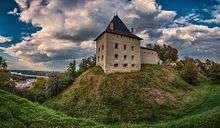
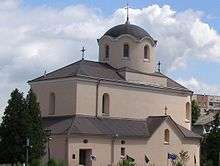
The most comprehensive records about Halych are found in the Hypatian Codex of the Primary Chronicle. The Old Halych is also being referred to as Princely Halych (Ukrainian: Княжий Галич, Knyazhyi Halych) in some Ukrainian sources in order to distinguish it from the contemporary city.[5][6] Today Old Halych as a settlement of the Old Ruthenia (Rus) is an archaeological landmark on a territory of Ivano-Frankivsk Oblast.[7] Located in confluence of Dniester and its tributaries, the Old Halych appeared on the basis of several early settlements and trading sites that in 12–13th centuries were merged into one urban-like system.[7] The central part of the human settlement with the Dormition Cathedral and princely chambers was fortified with powerful vallums and moats and was located over Lukva River (Dniester's tributary) at the place of contemporary village of Krylos.[7]
The first dynasty of Halych, descending from Vladimir of Novgorod, a Rurik family branch known as Rostislavichi, culminated in Yaroslav Osmomysl (1153–1187) – after whose rule Béla III of Hungary briefly conquered the Principality in 1188—before going extinct in 1199. The same year Roman the Great founded the new Rurikid dynasty, uniting Halychyna and Volhynia into the more powerful principality of Halych-Volhynia. In 1141 Prince (knyaz) Volodymyrko Volodarovych (1104–1152) who united the competing principalities of Przemyśl, Zvenyhorod and Terebovlya into the state of Halychyna transferred his capital from Zvenyhorod to Halych making it the seat of his Rurikid dynasty and considerably expanding the settlement.
The Mongols under Batu Khan took the capital in 1241, when the famous King Danylo was its ruler. Thereafter the town steadily declined, eventually ceding supremacy to the newly founded Lviv. The excavations of 1933–42 (Jaroslaw Pasternak), 1951–52 (Karger M.K., Aulikh V.), and 1955 uncovered remains of houses, workshops, fortifications, and ten churches built of white stone. Pasternak's excavations established that ancient Halych originated on the spot of today's village Krylos (located 5 km south of modern Halych) as early as the 10th century. In 1936 Pasternak also discovered remains of an 11th to 12th century three-apse cathedral with burial tomb of Prince Yaroslav Osmomysl in it. The cathedral is ascribed to the Cathedral of the Dormition previously known only from Chronicles, known to have been a sepulchre of the earliest Halychian princes. The sheer size (37,5 by 32,4 m) of the cathedral (the second largest mediaeval church on the territory of present-day Ukraine, smaller only to St. Sophia Cathedral in Kiev), suggests that ancient Halych was the seat of a diocese. Most likely the cathedral was built in 1157 and destroyed in 1241 by hordes of Batyi Khan, then rebuilt again and last time mentioned in 1576.
It is believed that the early Halychian architectural style, thoroughly permeated with Romanesque influences from the West, had been transferred further north-east. The builders of temples in Halych are believed to have also been responsible for the extant Pereslavl Cathedral and Church of Intercession upon Nerl. The foundations of the Assumption Cathedral (1157) are still to be seen. The only surviving medieval church is that of Saint Pantaleon, originally constructed at the turn of the 12th and 13th centuries, but significantly rebuilt in the 17th century and controversially reconstructed in the 1990s. The archaeological excavations (1989–2005 under direction of Yuri Lukomsky) at the terrains of Krylos and Halych continue.
Halych
.jpg)
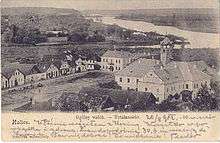
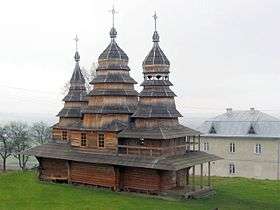
Gradually, old Halych depopulated to the point that its only mid-14th-century inhabitants were the Metropolitan of Halych and his staff. The present-day town is situated about 5 kilometres (3 miles) away from the ancient capital of Halychyna, on the spot where the old town's riverport used to be located and where prince Lubart of Lithuania constructed his wooden castle in 1367.
Its main historical monument is the church dedicated to the Nativity of Mary. Originally built at the turn of the 14th and 15th century, it was restored in 1825. Also of interest is an equestrian monument to Danylo of Halych, opened in 2003 to mark the 750th anniversary of that prince's coronation as the king of Ruthenia.
In 1349, following the death of Duke Bolesław Jerzy II of Mazovia and the Galicia–Volhynia Wars, Halych was annexed by Polish King Casimir III the Great. In 1367, it was granted Magdeburg rights, and in the same year, a Roman Catholic Diocese was established here. Five years later, Pope Gregory XI created in Avignon the Archdiocese of Halicz, which controlled the Dioceses of Kholm (Chełm), Peremyshl (Przemyśl) and Volodymyr-Volynskyi (Włodzimierz Wołyński). In 1409, the Archdiocese was moved to Lviv.
After King Casimir's death (1370), Louis I, King of Poland and Hungary subjected Red Ruthenia to the authority of Hungarian-appointed starostas, overlooked by Duke Vladislaus II of Opole. Hungarians remained in Halich until 1387, when Queen Jadwiga of Poland removed them and re-annexed the area into Poland. In the Kingdom of Poland, Halich remained one of main administrative centers of the Ruthenian Voivodeship. In 1564, the Sejm in Warsaw created a sejmik in Halicz, which ruled over the Ziemia of Halicz, including the powiats of Halicz, Trembowla and Kolomyja.
During the Polish–Ottoman War (1620–21), Halicz was burned by Crimean Tatars (1621), and in 1624, Hetman Stanisław Koniecpolski defeated the Tatars at Martynów, near Halicz. In 1649, Halicz was once again destroyed by Cossacks of Bohdan Khmelnytsky, further destruction took place in 1676, during the Polish–Ottoman War (1672–76). In 1765, Halicz had 110 houses and 3 churches, and Franciszek Ksawery Potocki serving as local starosta. The town was seized by Austrian troops in 1772, and remained part of the Habsburg Empire until late 1918.
In 1870, the population of Halicz was 4142, including 1609 Roman Catholics, 1690 Greek-Catholics, and 839 Jews. On November 1, 1918, until May 1919, the town was administered by Ukrainians. Following the Polish–Ukrainian War, Halicz temporarily returned to Poland, which was confirmed in Paris on June 25, 1919. On September 16, 1920, during the Polish–Soviet War, the Battle of Dytiatyn took place near Halicz, and on March 15, 1923, the Conference of Ambassadors recognized permanent Polish control over eastern part of former Galicia. Until the Soviet invasion of Poland, Halicz belonged to Stanislawow Voivodeship, in which it was the seat of a county.
In the beginning of July 1941, the town was occupied by Germans. The Jewish community was large. Most of the Jews lived in the town center on the right bank of the Dniester River. In the fall of 1941 or 1942, 1,000 Jews were murdered in a mass execution. Some 20–30 Jews were drowned in the river.[8]
After World War II, its Polish residents were resettled to the so-called Recovered Territories.
Tourist attractions
- Halychyna's tomb – the burial of legendary ruler Halychyna. Reconstruction in kurgan. In Krylos.
- Church of the Dormition (Built in 1584). In Krylos.
- Remains of Cathedral of the Dormition and St. Basil chapel. In Krylos.
- Reconstruction of 16 c. wooden church typical of Halychyna. In Krylos
- Prince's well. In Krylos.
- Residence of Mitropolit (Now museum of History of Halych). In Krylos.
- St. Panteleon church. The only survived 12 c. church from Halych-Volhynia.
- Castle of 13–17 c.. In Halych. Built by Casimir III the Great in the mid-14th century, and remodelled by architect Francisco Corazzini in the early 17th century. Captured by Turks in 1676, it was left in ruins, and most of its walls were dismantled by Austrians in 1796,
- Church of The Nativity (14 c.). In Halych.
Gallery
.jpg)
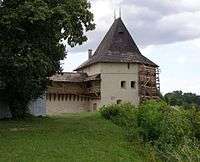
.jpg)
.jpg)
.jpg)
.jpg)
.jpg)
.jpg)
.jpg)
.jpg)
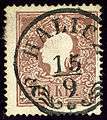 Stamp of Austrian Empire cancelled in 1859 in Polish HALICZ
Stamp of Austrian Empire cancelled in 1859 in Polish HALICZ
Location
- Local orientation
- Regional orientation
References
- "European Kingdoms – Eastern Europe – Galicia". The History Files. Kessler Associates. Retrieved 2014-12-13.
- History of Galicia
- Ukrainian Historical Glossary
- "Чисельність наявного населення України (Actual population of Ukraine)" (PDF) (in Ukrainian). State Statistics Service of Ukraine. Retrieved 19 July 2016.
- Princely Halych. Encyclopedia of Ukraine.
- Yakel, R. Halych – princely and contemporary (Галич — княжий і сучасний). Mirror Weekly. 7 November 2008
- Baran, V.D. Halych (Ancient) (ГАЛИЧ (ДАВНІЙ)). Encyclopedia of History of Ukraine.
- http://www.yahadmap.org/#village/halych-galych-halycz-galycz-galich-ivano-frankivsk-ukraine.644
Further reading
- Pasternak J. Die neuentdeckte mittelalterliche Kathedrale in Krylos. – Jahrbücher für Geschichte Osteuropas, 1938, Bd. 3, S.
External links
| Wikimedia Commons has media related to Halych. |
- Halych in the Encyclopedia of Ukraine, vol. 2 (1989). (in English)
- Halych. Castles.com (Castles and temples of Ukraine) (in Ukrainian); Halych. Castles.com (Castles and temples of Ukraine) (in English)
- Davniy Halych. Official website of the National Historical Reserve "Davniy Halych" (Ancient Halych) (in English)
- History and photographs (in Ukrainian)
- Halicz in the Geographical Dictionary of the Kingdom of Poland, volume III (Haag — Kępy) published 1882, S. 15. (in Polish)
- "Галич, город в Галиции". Brockhaus and Efron Encyclopedic Dictionary: In 86 Volumes (82 Volumes and 4 Additional Volumes). St. Petersburg. 1890–1907.
- Marek, Miroslav. "The first dynasty of Halych". Genealogy.EU.
- Marek, Miroslav. "The second dynasty of Halych". Genealogy.EU.
- Reconstruction of Cathedral of the Dormition
- Photographs of the Jewish and Karaite sites in Halych